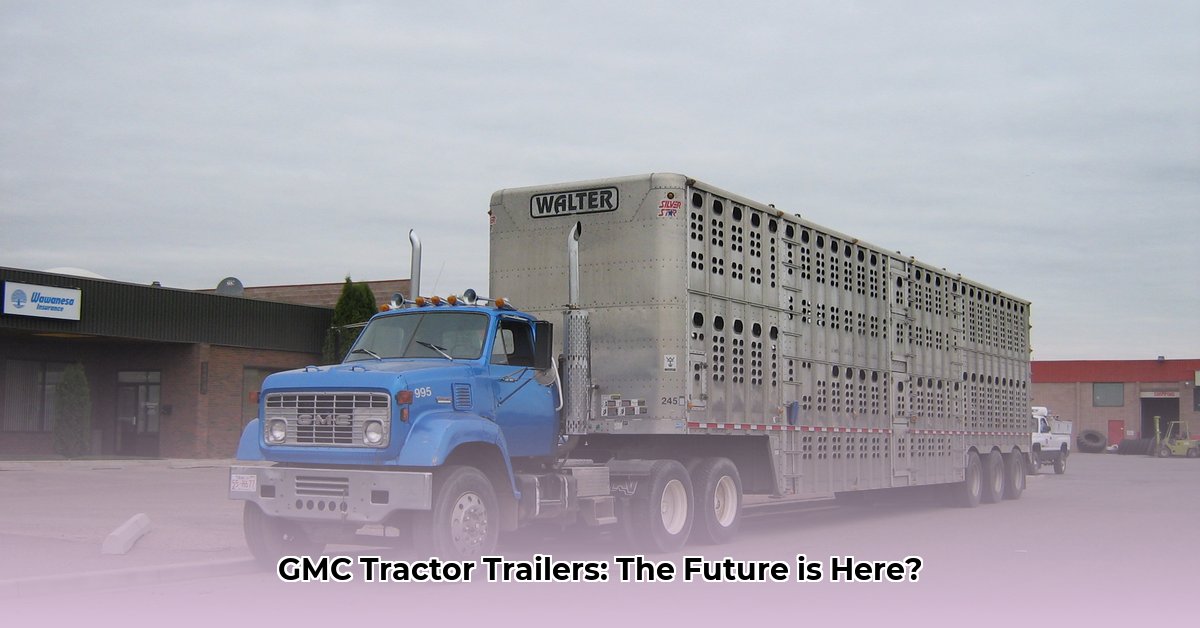
The commercial trucking industry is undergoing a period of significant transformation, driven by evolving regulations, technological advancements, and economic shifts. This article analyzes the current landscape, focusing on GMC's position and future prospects within this dynamic environment. We'll examine key challenges and opportunities, offering actionable insights for manufacturers, fleet operators, and drivers alike. For more on truck types, see this helpful guide on straight trucks vs. tractor trailers.
Market Analysis: Navigating a Shifting Landscape
The trucking industry faces a confluence of challenges. The persistent driver shortage continues to constrain growth, with finding and retaining qualified drivers remaining a major hurdle. Simultaneously, fluctuating fuel prices significantly impact profitability, demanding efficient fuel management strategies. Furthermore, stricter emission regulations necessitate substantial investments in cleaner technologies. These challenges are compounded by increasing operational costs and the need for enhanced safety measures. How is the industry responding? Innovation in areas like telematics, autonomous driving technologies, and alternative fuel vehicles is emerging as a key element.
GMC's Strategic Response: Adapting to Change
GMC is actively engaging with these industry trends. They are focusing on improving fuel efficiency across their range of models. Their commitment to advanced safety features is another key element. The integration of telematics systems provide real-time data for efficient fleet management and route optimization. This allows for data-driven decisions and reduced downtime, which helps address the rising operational costs faced by trucking companies. Moreover, GMC is actively exploring alternative fuel options, aligning with the growing demand for environmentally friendly transportation solutions. But is this enough to secure their position in the long term?
GMC-Specific Analysis: Features and Strengths
GMC's offerings are geared towards addressing the key challenges facing the trucking industry. Their focus on fuel efficiency and safety features, alongside the integration of advanced telematics, places them firmly in a competitive position. Their models are designed for heavy loads, a testament to their understanding of the market’s needs. However, a crucial assessment is needed regarding their long-term commitment to alternative fuel solutions. Further, how will GMC address the driver shortage issue beyond simply providing advanced tech?
Future Outlook: Challenges and Opportunities
Several key trends will shape GMC's future trajectory:
Autonomous Driving: The adoption of autonomous driving technologies will revolutionize the trucking industry. GMC's ability to integrate these advancements into their vehicles will be crucial for competitiveness.
Electrification and Alternative Fuels: The push towards sustainability demands a shift towards electric and alternative fuel vehicles. GMC's investment in research and development in this area will be pivotal.
Data-Driven Optimization: The use of data analytics and telematics will continue to play a crucial role in improving operational efficiency. GMC's commitment to providing advanced telematics solutions will be key.
Addressing the Driver Shortage: Solving the driver shortage requires a multi-pronged approach, encompassing better compensation, improved working conditions, and the adoption of driver-assistance technologies to alleviate the stress and workload on drivers.
Actionable Insights and Conclusion
The future success of GMC, and indeed the entire trucking industry, hinges on its ability to adapt swiftly and effectively to these dynamic market forces. Here are key takeaways:
- GMC: Invest heavily in R&D for electric and autonomous vehicles. Improve driver recruitment and retention strategies. Enhance telematics capabilities.
- Fleet Operators: Utilize available telematics data to optimize operations. Explore alternative fuels and autonomous solutions. Invest in driver training enhancing profitability and employee retention.
- Drivers: Embrace new technologies and seek advanced training. Prioritize safety and efficiency.
- Government: Provide incentives for the adoption of cleaner technologies and address infrastructure needs for alternative fuel vehicles.
The trucking industry is on the cusp of significant change. GMC's success will depend on its ability to navigate this complex landscape, adapting its strategies, and actively engaging with the industry's evolving requirements. Continued innovation and a strategic approach will determine who thrives in the future.